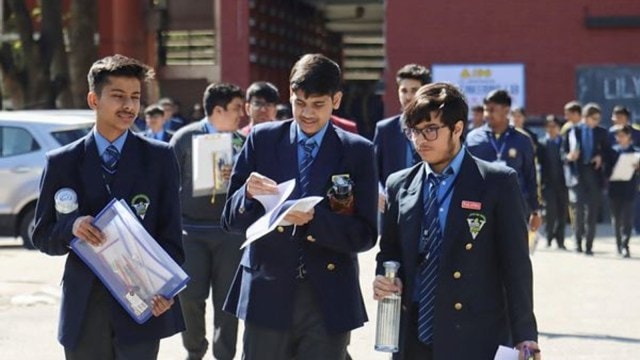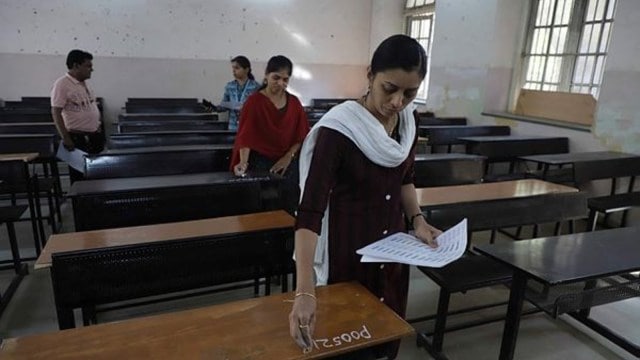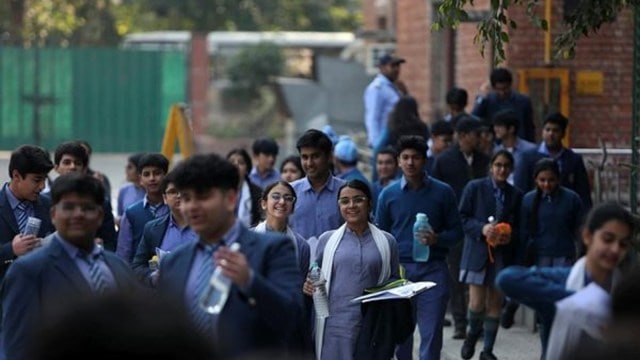
Decode Politics: Why a ‘red book’ has seized Maharashtra poll discourse
Since the Lok Sabha polls, Congress leader Rahul Gandhi has been prominently displaying a copy of the Constitution with a red and black hardcover at his rallies, as part of his campaign that the Modi government posed a threat to the statute. On Thursday, it became the object of Maharashtra Deputy Chief Minister and senior BJP leader Devendra Fadnavis’s attack.
Fadnavis alleged that the Leader of the Opposition was trying to seek support from “urban Naxals and anarchists” with the “red book” in his hand.
Fadnavis seemed to be referring to the book Quotations from Chairman Mao Tse-tung, a collection of statements and aphorisms from the man credited with the formation of the People’s Republic of China, which he ruled till 1976.
Over the years, Mao’s book has come to be called the ‘Little Red Book’ due to its bright red cover, a colour associated with the Communist Party, and its small size.
The book was published originally by the People’s Liberation Army Daily, the newspaper of the People’s Liberation Army (PLA), and eventually became central to Mao’s ideology and personality.
Thousands of copies of the book were printed and distributed to citizens. As per the book Mao Cult: Rhetoric and Ritual in China’s Cultural Revolution (Cambridge University Press, 2013), written by modern Chinese historian Daniel Lesse, over a billion volumes of the book were printed between 1966 and 1969. By 1971, Lesse noted, the book was translated into thirty-six languages, including Braille script, and published around 110 million times abroad.
In the foreword to the second edition of the book in 1966, then Chinese vice-premier Lin Biao wrote: “The broad masses of the workers, peasants and soldiers and the broad ranks of the revolutionary cadres and the intellectuals should really master Mao Tse-tung’s thought; they should all study Chairman Mao’s writings, follow his teachings, act according to his instructions and be his good fighters.”
The book contains Mao’s quotes and is divided into sections such as The Communist Party, Classes and Class Struggle, War and Peace, People’s War, Unity, among others.
Some of its famous quotes include: “The force at the core leading our cause forward is the Chinese Communist Party. The theoretical basis guiding our thinking is Marxism- Leninism”; “Every Communist must grasp the truth, ‘Political power grows out of the barrel of a gun’”; and “The seizure of power by armed force, the settlement of the issue by war, is the central task and the highest form of revolution.”
A chapter in Mao’s Little Red Book: A Global History (Cambridge University Press) notes how the book gained popularity at the outbreak of the Naxalite Movement in 1967. It began with a local Communist-unit led peasants’ protest against the local gentry, in the hamlet of Naxalbari in West Bengal’s Darjeeling, and then grew into the movement.
The chapter notes how Naxalbari leader Charu Majumdar treated Mao’s quotations “like gospel”, insisting that the “comrades keep a copy of the Little Red Book on their persons at all times”. This was to be studied in “indoctrination classes” and also read aloud to aid the illiterate peasants.
But the book’s popularity in the movement dipped after Majumdar’s death in 1972.
The BJP has been using the term regularly, particularly since the high-profile arrests of activists in 2018 in the Elgar Parishad case.
Speaking in Parliament in February 2022, Modi accused the Congress of being “trapped by the urban Naxals”, and said its “thought process has been captured by urban Naxals”, making it “destructive”.
However, in a reply to a written question, Minister of State for Home G Kishan Reddy told Parliament in March 2020: “The phrase ‘Urban naxals’ is not used by the Ministry of Home Affairs, Government of India.” Reddy went on to add that the government’s National Policy and Action Plan addresses Left Wing Extremism “in all its manifestations”, including urban activities.
This particular offensive against Gandhi seems aimed at checkmating the Opposition narrative of “threat to the Constitution” under the Modi government, which proved successful for it in the Lok Sabha polls.
Fadnavis said: “My allegations against Rahul Gandhi about his inclination towards urban Naxals have proved true. He showed the red book and tried seeking help (politically) from urban Naxals and anarchists.” He accused Gandhi of indulging in drama regularly and “insulting the Constitution”.
Jairam Ramesh, the Congress general secretary in-charge of communications, countered: “This book which Mr Fadnavis is taking objection to is the Constitution of India, of which Dr Babasaheb Ambedkar was the main architect. This is the very same Constitution of India which the RSS had attacked in November 1949 as not having been inspired by Manusmriti. It is the very same Constitution of India that the non-biological PM wants replaced.”
Vanchit Bahujan Aghadi president Prakash Ambedkar, who is the grandson of B R Ambedkar, also got into the debate, saying it was “unfortunate to see the Indian Constitution being painted in different colours”.
“The copy of the Indian Constitution in Parliament is leather bound and is black embossed with a pattern in gold… The Allahabad publishing house simultaneously came out with a Constitution copy with hardcover in a reddish-brown (the copy Gandhi carries) that has become popular as it is smaller in size and handy.”
Meanwhile, there is another row brewing. The BJP has questioned the Congress over distribution of blank notebooks with a red cover saying the Constitution, at Gandhi’s recent Nagpur Samvidhan Sammelan. The crowd was meant to wave these as the Congress leader did the same from the dais.

 Posts
Posts Sign up as a Teacher
Sign up as a Teacher







